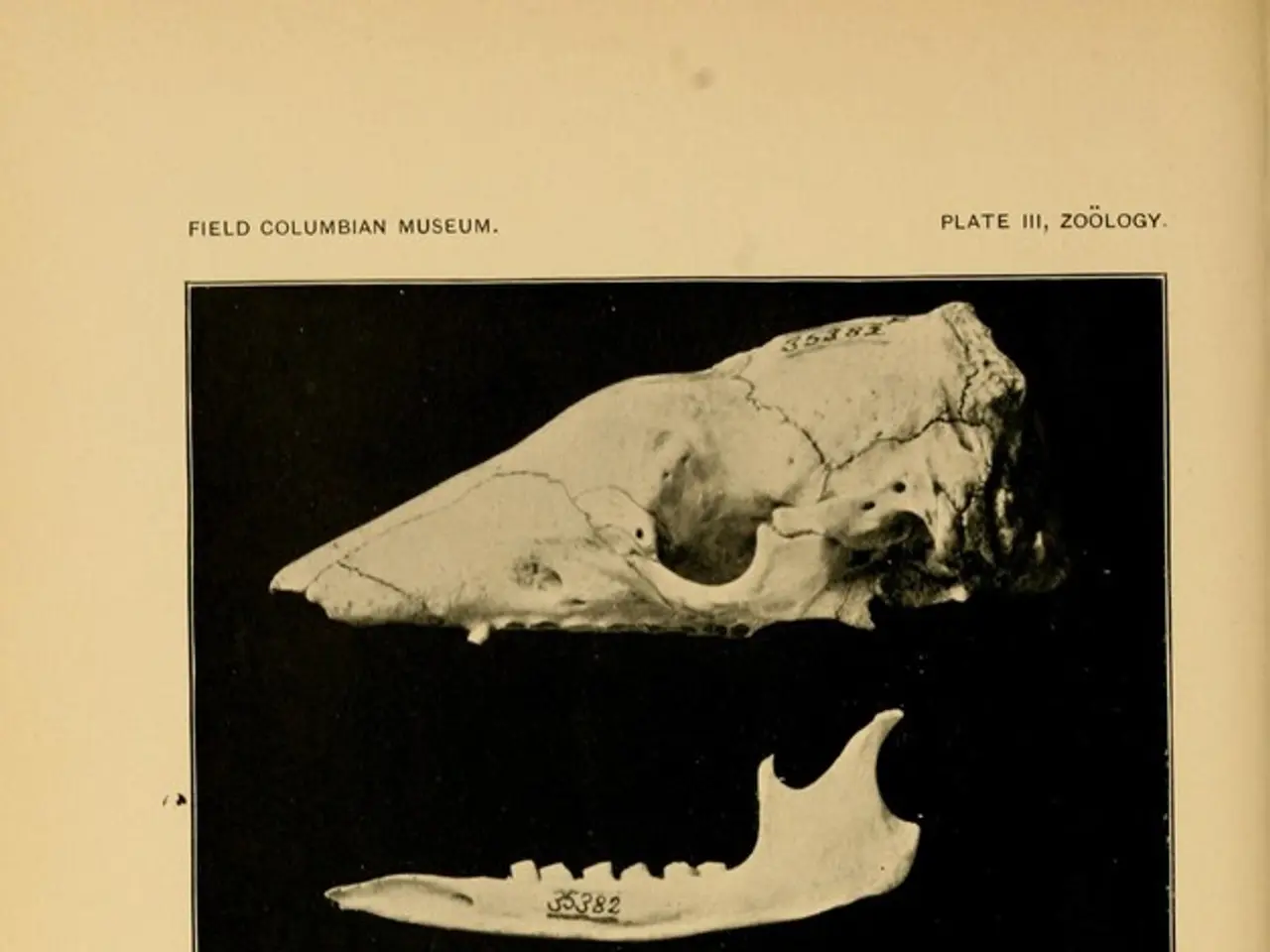Bone deterioration ailment symptoms, remedies, and further insights
Avascular necrosis, often referred to as osteonecrosis, aseptic necrosis, or ischemic necrosis of bone, is a condition that affects the hip joint in many individuals. This condition causes death of bone tissue due to an interruption in its blood supply.
The femoral head, the medical term for the thigh bone, is the most common location for avascular necrosis. This condition typically affects males aged between 25 and 50 years old.
Common causes and risk factors for avascular necrosis include serious injury, such as fractures or dislocations damaging blood vessels, long-term or high-dose corticosteroid use, excessive alcohol consumption, and certain medical conditions like lupus, sickle cell anemia, pancreatitis, and HIV/AIDS. Radiation therapy and chemotherapy can also impair blood supply to the bone.
As the disease progresses, the following may occur over time: stiffening joints, a loss in the range of motion, a sudden increase in pain if the end of the bone collapses, and arthritis. In its advanced stages, it may cause joint collapse and secondary arthritis, severely impairing hip function.
In the early stages of avascular necrosis, a person may not have symptoms. However, as the condition progresses, symptoms of pain may occur, particularly in weight-bearing bones.
Nonsurgical treatment can help if avascular necrosis only affects a small area or is in its early stages, but it does not slow its progression. Common treatments include physical therapy, anti-inflammatory medications, and using crutches or canes.
Core decompression is the most common surgical treatment for avascular necrosis. This procedure involves drilling small holes into the bone to stimulate new blood vessel growth. Osteotomy, which involves reshaping the bone, is appropriate for treating small areas of bone damage. Bone graft is a surgical treatment reserved for advanced cases of avascular necrosis.
New therapies that utilize stem cells may help young individuals avoid total hip replacement for avascular necrosis of the femoral head. Total joint replacement is a surgical treatment that aims to increase a person's range of motion and reduce pain.
Diagnosis of avascular necrosis can involve a medical history, physical examination, and imaging tests such as X-rays, MRIs, and CT scans. MRI scans are highly sensitive and can detect signs of avascular necrosis before a person starts experiencing symptoms.
Every year in the United States, there are approximately 6,000 new cases of avascular necrosis developing in the femoral head, contributing to about 10% of roughly 250,000 hip replacements per year.
The main methods of preventing avascular necrosis involve addressing risk factors such as alcohol consumption, smoking, and corticosteroid use. It's important to be aware of these risks and take steps to reduce them to maintain a healthy and active lifestyle.
- The femoral head, a common location for avascular necrosis, is the medical term for the thigh bone.
- Serious injuries, long-term corticosteroid use, excessive alcohol consumption, and certain medical conditions like lupus can cause avascular necrosis.
- As avascular necrosis progresses, a person may experience symptoms such as pain, stiff joints, a loss in the range of motion, and arthritis.
- In its early stages, avascular necrosis can be treated with physical therapy, anti-inflammatory medications, and using crutches or canes, but it does not slow its progression.
- Core decompression, osteotomy, and bone graft are surgical treatments for avascular necrosis, with bone graft reserved for advanced cases.
- Stem cell therapies may help young individuals avoid total hip replacement for avascular necrosis of the femoral head, while diagnosis involves a medical history, physical examination, and imaging tests like X-rays, MRIs, and CT scans.





